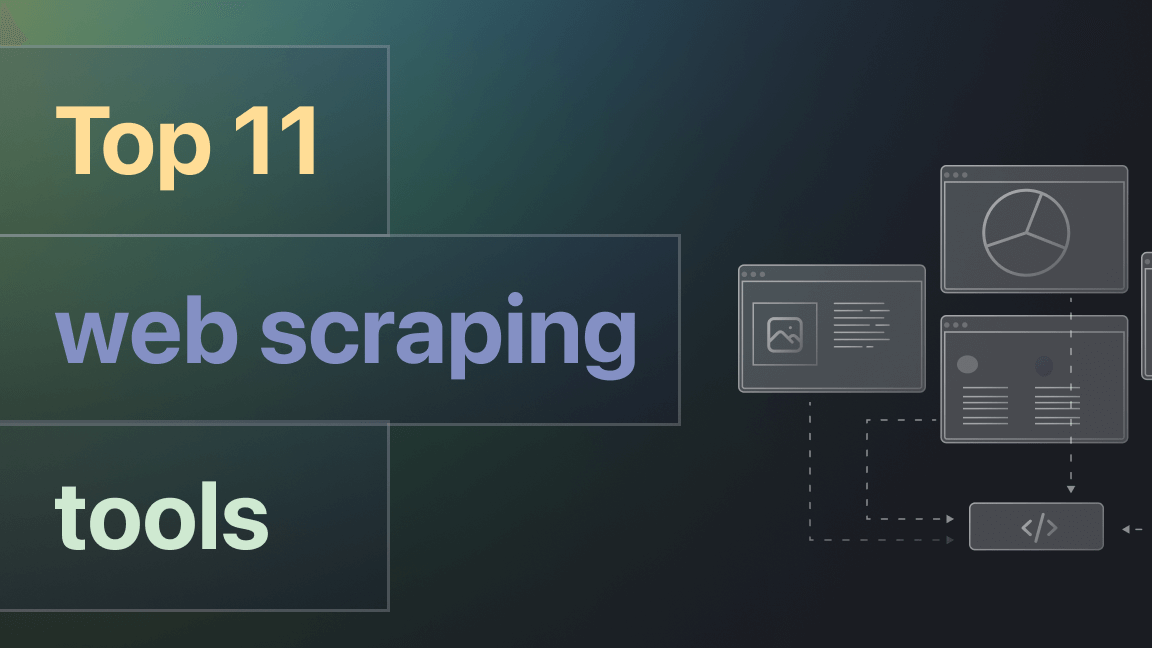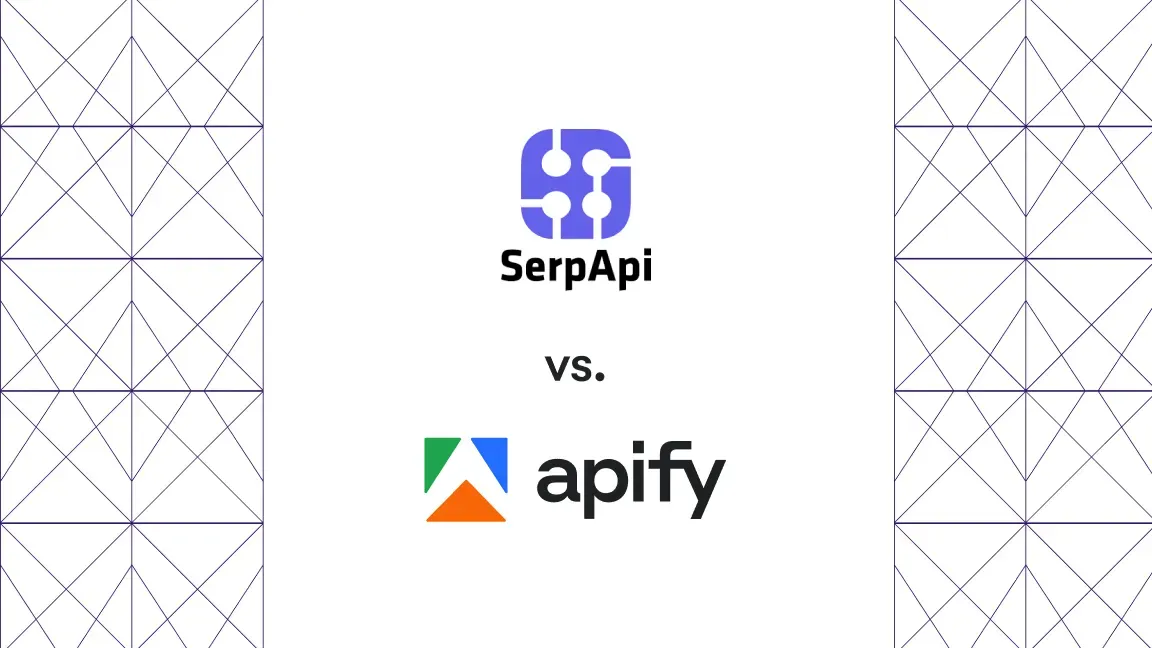Developers looking for tools to design, test, manage, and publish APIs might be considering two popular options: Postman and RapidAPI, both designed to accelerate API development. At first glance, there is overlap: both let you send HTTP requests, inspect responses, automate tests, and share among teams. However, their offer and use cases differ:
- Postman works well for collaboration, scripting, and CI/CD integration. It’s a strong choice if your primary goal is building and maintaining APIs in teams.
- RapidAPI, on the other hand, is stronger when your API is also a product: when you need to publish, monetize, monitor, and provide discoverability.
RapidAPI vs. Postman - feature comparison
| Feature category | Postman | RapidAPI |
|---|---|---|
| Request + HTTP client | Complete API client – supports REST, GraphQL, SOAP, WebSockets | Supported via VS Code extension and browser-based testing interface |
| Testing and scripting | JavaScript (Postman Sandbox), Chai assertions, AI Postbot to generate scripts | JavaScript (Node.js-style), supports assert and crypto |
| Environments and variables | Multiple named environments with scoped variables | Multiple environments supported, less advanced scoping |
| Collaboration | Robust: workspaces, version control, role management | Limited: shareable public APIs, but not full team features |
| Monetization | No native monetization built-in | Monetize via Hub with pricing plans and usage tiers |
| Charging model | Subscription-based by users and volume | Usage-based per API; RapidAPI takes ~20% commission |
| API discovery | API Network for publishing and sharing APIs | Public catalog to browse, subscribe, and test APIs |
| CI / automation | Postman CLI (closed source) and open source CLI tool | Webhook-based CI/CD triggers, no native integrations |
| Monitoring | Monitors for health, performance, multi-region testing | Scheduled tests, failure alerts, geo-distributed “workers” |
| Community support | 25k+ members, support forum, tutorials | Formal issue support and documentation available |
Postman: Dev-centric tool for testing and collaboration
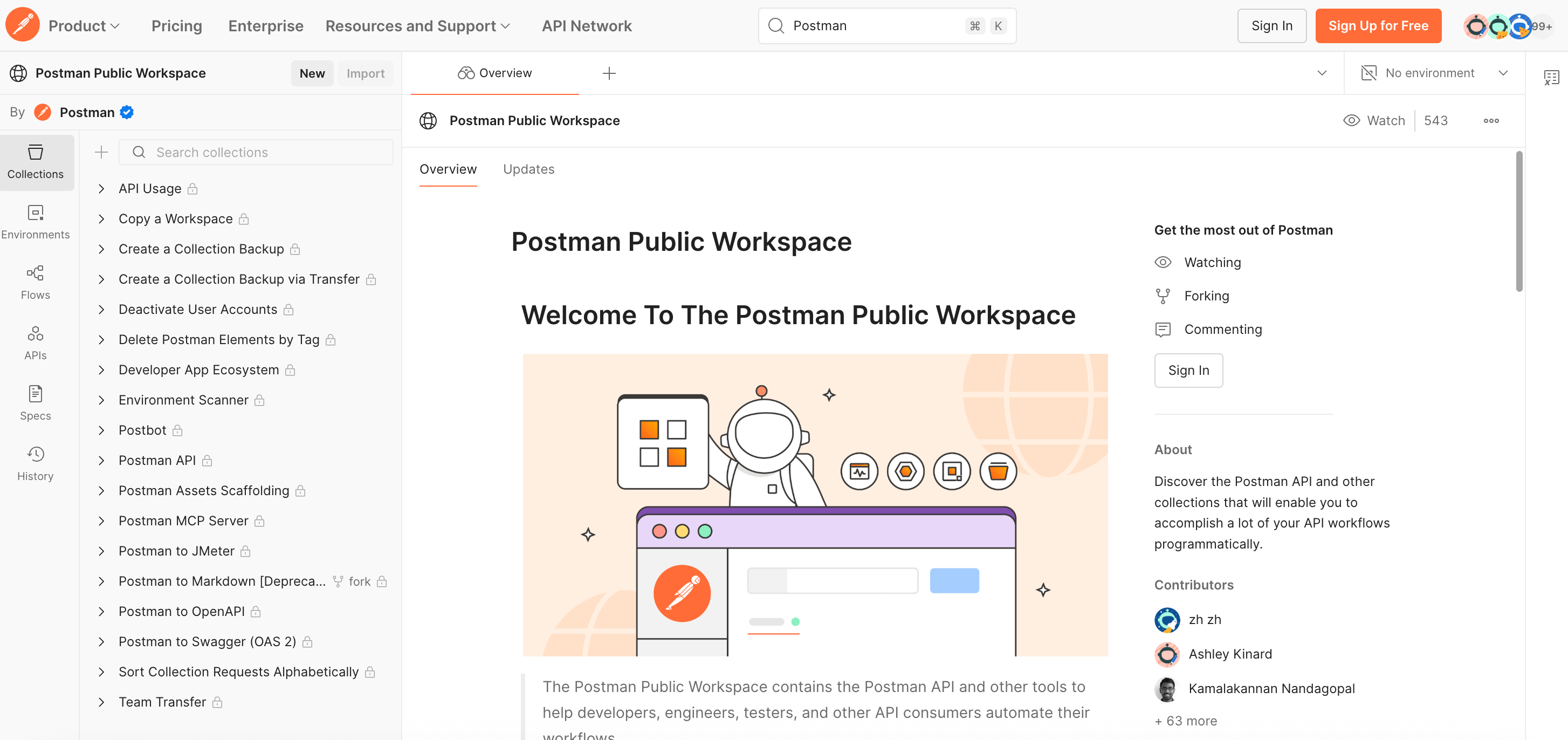
Postman is widely used as a core API client thanks to its wide protocol support and team features. It works well as a development and testing environment, while also fitting into automated pipelines. What you get:
- Interface able to import, generate, and work with standard API specification formats (OpenAPI, GraphQL, RAML)
- Mock servers for simulating APIs during development
- Collaboration features: workspaces, roles, permissions, versioning
- CI/CD and automation integrations (GitHub Actions, Jenkins, GitLab)
- Large community of 25,000+ members for support, tutorials, and Help Hub
RapidAPI: Marketplace for monetizing APIs
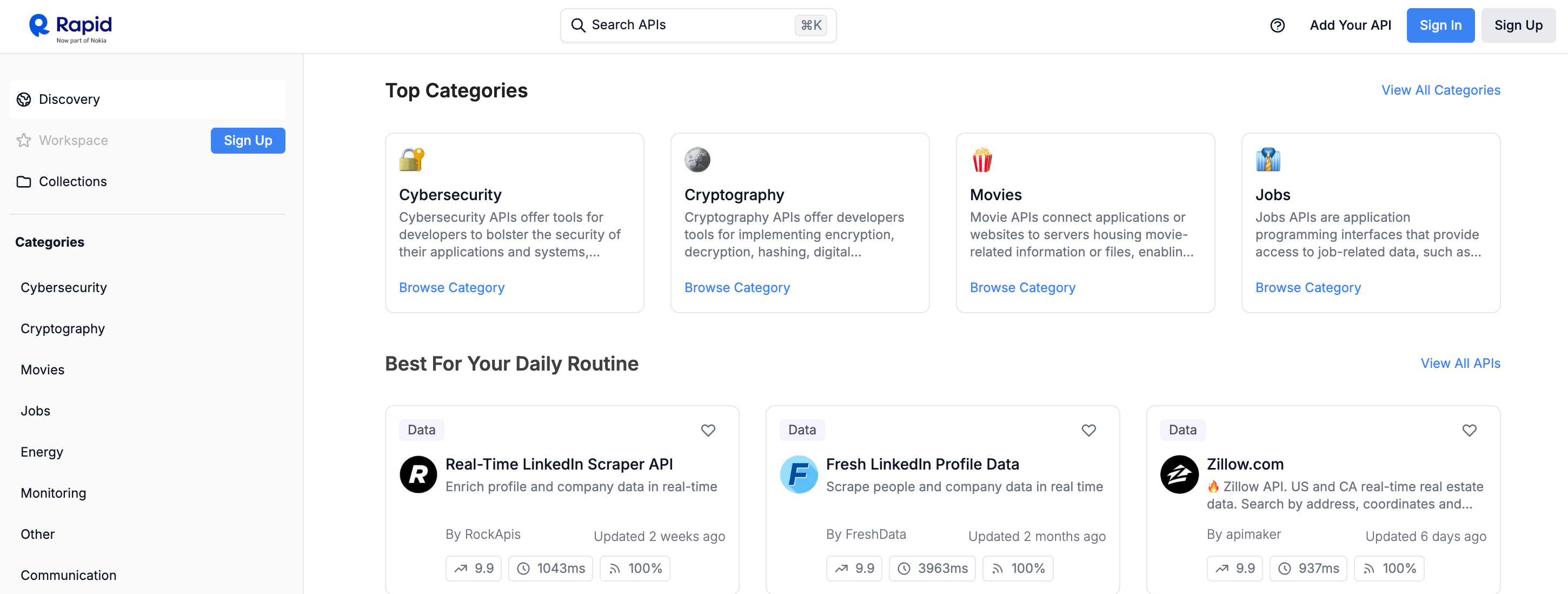
RapidAPI is positioned more as an API marketplace and operations hub than just a client. It is useful when you need both testing tools and a way to publish APIs for external consumption. It offers:
- API publishing features with monetization (usage plans, subscription tiers)
- A marketplace with thousands of APIs published
- Integrated testing and basic monitoring for performance and SLAs
- VS Code extension to build, test, and send API requests, and view responses - directly inside the editor
- RapidAPI Studio to import/export APIs with OpenAPI specs, set up environment variables, generate code snippets, write tests, and publish APIs on RapidAPI Hub
- Centralized discovery of third-party APIs
Team collaboration and versioning
For developers working on internal APIs with multiple contributors, Postman’s shared workspaces and history tracking are more effective. RapidAPI is stronger when the goal is managing access for external API consumers rather than collaborative editing inside a dev team.
In Postman, multiple developers can:
- Edit the same collection of API requests in real time, with changes synced across the team thanks to live sessions
- Fork and merge collections, similar to branching and merging in version control systems, so different team members can work in parallel without overwriting each other
- See version history, revert to earlier versions, and leave inline comments on a specific part of a request, example, or script
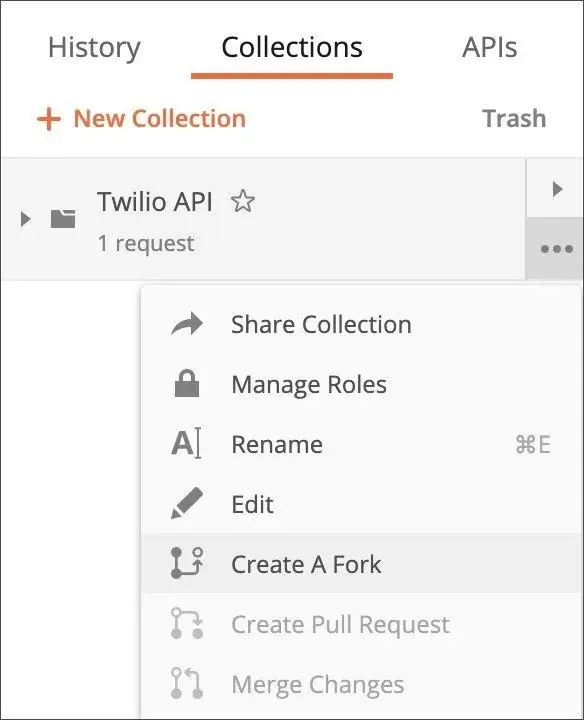

Source: Postman
In RapidAPI, collaboration isn’t the key focus:
- You can publish an API to your team or organization (e.g., via an Enterprise Hub), but there’s no concept of shared editing of request collections the way Postman has
- Versioning in RapidAPI is about API versions exposed to consumers (e.g., v1, v2 of your API), not about collaborative editing of API test requests

Marketplaces: Postman’s API Network vs. RapidAPI’s Hub
Both platforms have a marketplace where you publish and discover APIs, but they serve different goals and audiences:
- Postman’s API Network offers thousands of APIs documented as Postman collections (curated sets of API requests with docs and tests):
- Organizations and developers can publish their APIs (with collections, documentation, and examples)
- The infrastructure is focused on developer onboarding - helping others learn how to use your API, not sell it
- Others can discover and import APIs
- Free to publish and browse
- Built-in documentation - API publishers don’t have to deploy documentation outside Postman
- Collaboration-friendly: Teams can fork, comment, and share collections
- No built-in monetization (subscription plans, billing)
- No rate limiting or consumer management - it’s about visibility, not control
- RapidAPI’s Hub is a platform designed for distribution and monetization, and operates as a marketplace for published APIs:
- API providers list APIs on the Hub and set pricing tiers, quotas, and usage limits
- Developers subscribe to APIs through a dashboard and billing system - providers charge for API usage
- RapidAPI handles authentication, analytics, performance tracking, and payments
Pricing models
Since Postman and RapidAPI offer different platforms, the pricing models and cost structure differ as follows:
| Pricing feature | Postman | RapidAPI |
|---|---|---|
| Model type | Subscription / seat-based | Usage / subscription + marketplace commission - 20% |
| Monetization support | None built-in (you build your own billing) | Native via marketplace fee model |
| Base cost structure | You pay per users and volumes, depending on plan (Free, Basic, Professional, Enterprise) | APIs define pricing plans (free, freemium, paid). Consumers pay subscription or overage fees. Providers pay commission to RapidAPI |
| Overage / extra usage charges | Some plans include add-ons (extra mocks, monitors) beyond base quotas | Many APIs charge overage – if you exceed quota, you pay extra per request |
| Scaling | As your team grows, cost scales linearly with seats and plan level | On the provider side, higher usage means more revenue but also more commission paid; on consumer side, jumps in usage may push you into expensive tiers |
Infrastructure and environment
Postman operates at the client and collaboration layer.
- It provides workspaces, collections, and environments where developers can store and reuse variables such as base URLs or API keys, making it easy to switch between development, staging, and production setups without rewriting requests.
- Cloud-hosted features: Monitoring and scheduled collection runs, mock servers, collaboration spaces, workspaces, and collection syncing
- Local execution: API requests sent from the desktop app or browser (with an appropriate agent like the Desktop Agent), and from local CLI tools like Newman and Postman CLI running in CI/CD pipelines or command-line interfaces; enabling access to private network resources unreachable by Postman’s cloud servers
- It’s optimized for API design, testing, and collaboration, not for hosting or operating APIs in production.
- AI Postbot offers suggestions for both pre-request and post-response scripts
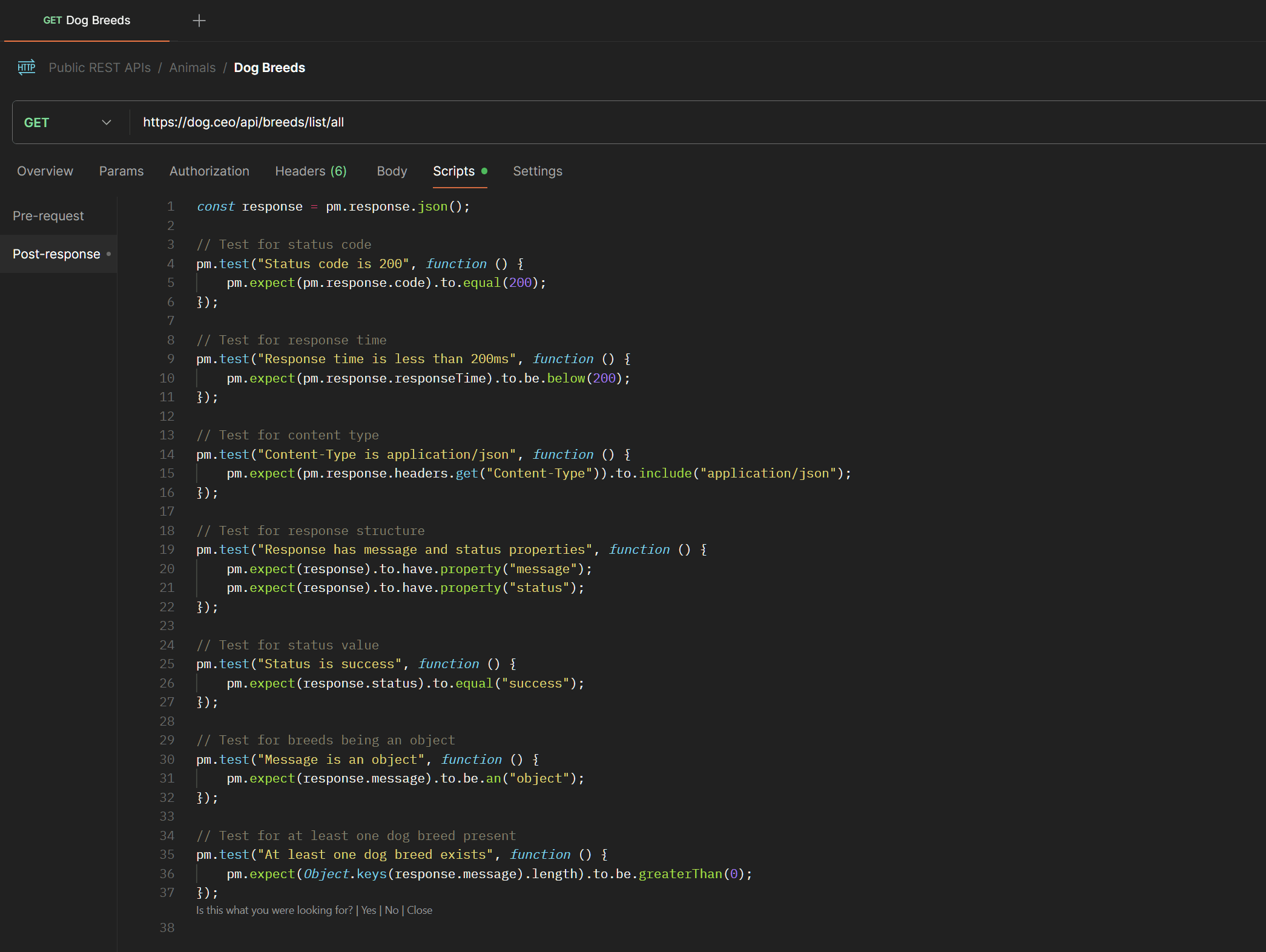
RapidAPI, by contrast, operates at the platform level and acts as a central control layer for both providers and consumers:
- It provides infrastructure for publishing, managing, and monetizing APIs. When you publish an API on the RapidAPI Hub, the platform handles subscription management, rate limiting, analytics, and billing for you.
- It also includes RapidAPI Testing and Monitoring, which run in the cloud and support multi-region execution to validate performance globally.
- Supports multiple ways of defining tests: The Request Generator infers API properties and creates tests based on the properties, the Visual Editor (drag-and-drop interface), and the Code Editor to write or edit the test code directly.
- RapidAPI Client extension in VS Code lets developers send requests and manage environment variables locally.
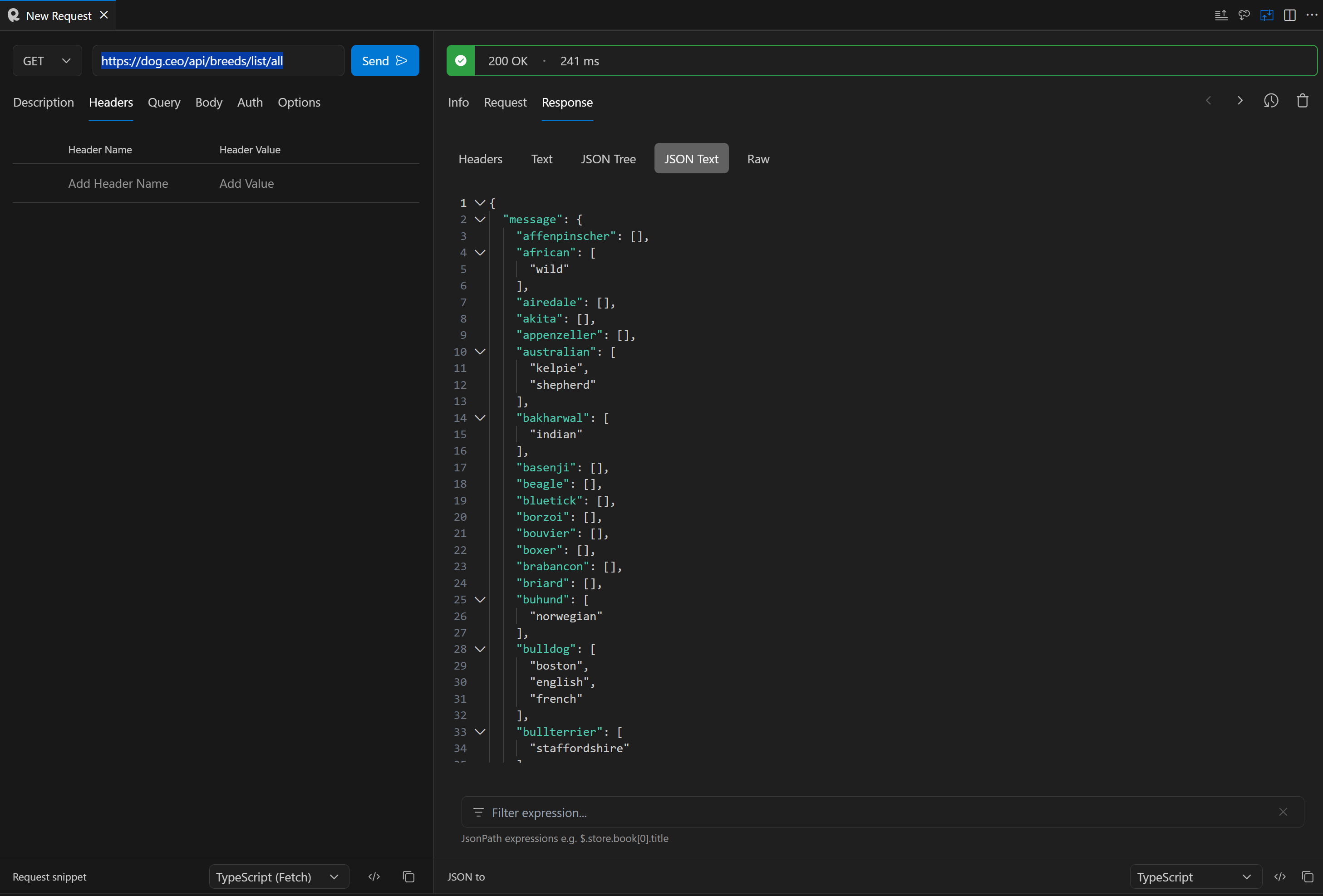
Alternative for scraping and data collection: Apify
When your API work needs to move beyond testing and consumption and includes dealing with web content extraction, Apify’s platform is already built for it - letting developers turn any website into an API.
It provides an open-source SDK, ready-made scrapers on Apify Store, and a cloud runtime with scheduling, scaling, and monitoring built in.
Apify’s marketplace - Apify Store - offers over 7,000 scrapers and automation tools (called Actors) that handle anti-bot measures, use proxies, and are designed to perform a specific task, be it scraping social media posts, e-commerce data, or lead collection.
- Developers can build their own tools in Apify Console using templates and custom code, and monetize them through Apify Store.
- Consumers can browse solutions by category, service type, or author and run them instantly thanks to a no-code UI. Each scraper automatically exposes a ready-to-call API endpoint with JSON, CSV, or Excel output.
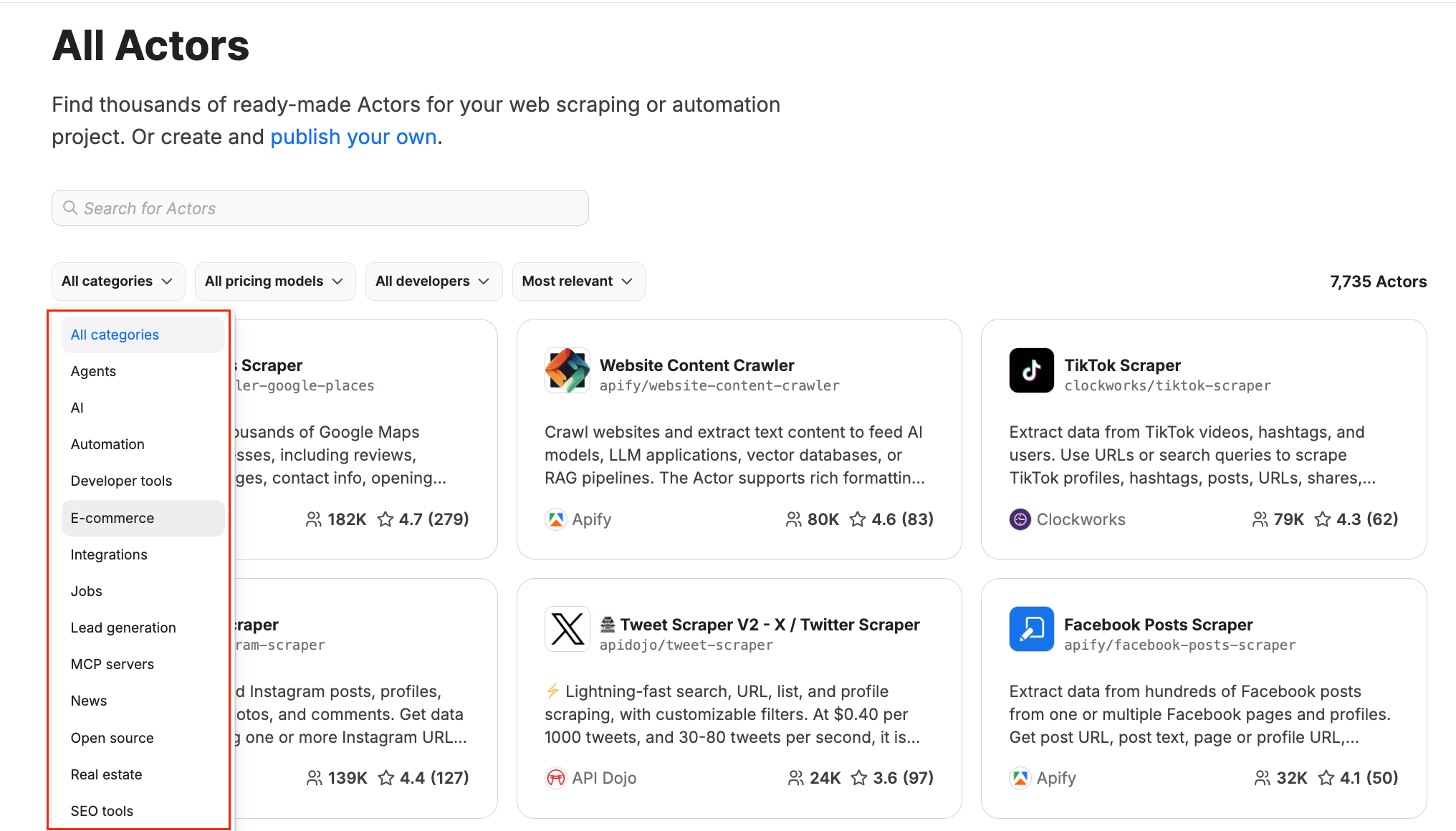
What you get:
- Infrastructure - you deploy scrapers to Apify’s cloud without the need to host your own servers
- Auto-generated user interface based on the input schema for each Actor so that non-coders can tweak input easily (using keywords, URLs, or filters)
- Built-in proxy rotation, anti-blocking logic, and session management to help reduce IP blocking or detection
- Monitoring console with run status, granular metrics (with detailed logs and error classifications), as well as alerts set in Console, via email or Slack
- You can schedule Actors or tasks to run automatically
- Built-in monetization: Apify offers various pricing models, such as pay per event or pay per result, as well as subscriptions
Apify gives you multiple ways to trigger and manage Actors, depending on your workflow. You can use a ready-to-go solution directly in Apify Console using the UI, or - you can start it from your local machine using Apify CLI, Apify API or SDK client and run it in the cloud.
| Method | Description |
|---|---|
| Apify Console | The Apify platform lets you run Actors manually, configure input parameters, and watch their logs in real time. No code needed. |
| REST API / Clients |
Actors can be invoked using the Apify API by sending an HTTP POST request to the Run Actor endpoint.
See the API Reference for full details. Available (API) clients: • JavaScript client • Python client |
| Webhooks | Webhooks let you trigger actions when events occur, like chaining another Actor to start when the current one finishes. |
| Apify CLI & GitHub Actions | Run Actors locally, deploy new versions to the platform, and trigger runs as part of CI/CD pipelines using the Apify CLI or GitHub Actions. |
Summary
Postman is a mature, developer-focused API platform that excels in collaboration, scripting, CI/CD integration, and client-side workflows. It’s a strong choice if your primary goal is building and maintaining APIs in teams.
RapidAPI, on the other hand, is stronger when your API is also a product: when you need to publish, monetize, monitor, and provide discoverability.
For many teams, the optimal approach is hybrid: use Postman (or similar) as your everyday developer tool, and layer on RapidAPI’s Hub + monitoring + publishing for the outward-facing API side.
Apify is a strong choice for scraping and automation when you want to run workflows at scale with a built-in infrastructure (including storage and proxies), or offer your solutions to the public via a standardized marketplace.



